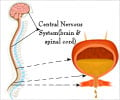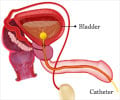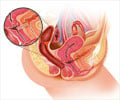
‘The researchers performed three literature searches for published studies on stress, urge and mixed urinary incontinence in May 2019, September 2019 and January 2020.’
Tweet it Now
Urinary incontinence (UI), the involuntary loss of urine, is prevalent among older adults, particularly women. Older women may not realize that they have a medical condition and are too embarrassed to talk about their UI symptoms with their physician. By not seeking medical care to address their condition, many women may reduce their independence and quality of life, and even avoid social situations out of fear.Physical therapy (PT) treatment interventions are available for UI, but how well do they work to relieve women’s troubling symptoms? This systematic review examined the effectiveness of various conservative PT interventions to treat stress, urge and mixed urinary incontinence in older female patients, says Lauren Paretti, a student physical therapist at Misericordia University in Dallas, Pennsylvania, and one of the study’s co-authors.
“After working with older adults in a variety of settings, we noticed that many females were concerned about urinary incontinence but were unaware that there are conservative treatment options for them that can be provided by physical therapists,” says Paretti. “Much of the research on urinary incontinence has been reported on younger females. We were interested in discovering the most effective interventions to educate older females to help them with this issue.”
The researchers performed three literature searches for published studies on stress, urge and mixed urinary incontinence in May 2019, September 2019 and January 2020. They evaluated article quality using standard evidence scales, and then measured the outcomes of older women’s UI symptoms after PT interventions with instruments like patient questionnaires, standard scales and/or bladder diaries. Fourteen scientific articles were included in the study’s results.
PT interventions to manage UI symptoms, including pelvic muscle floor training, electrical stimulation, behavioral therapy, extracorporeal magnetic intervention and physical activities were effective at reducing women’s UI symptoms compared to control groups, the data showed. PT interventions should be offered to patients as a first-line therapy as opposed to non-conservative methods, the researchers concluded.
Advertisement
Advertisement













